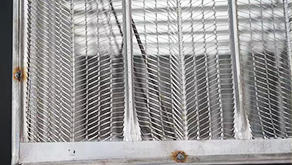Nov . 02, 2024 12:48 Back to list
y strainers for water
Understanding Y-Strainers for Water Applications
Y-strainers are crucial components in various fluid systems, particularly for water applications. Their primary function is to filter out debris and particulates from liquids, preventing damage to pumps, valves, and other equipment downstream. In this article, we will explore the design, operating principle, benefits, and applications of Y-strainers, ensuring a comprehensive understanding of their role in maintaining system efficiency.
Design and Functionality
A Y-strainer gets its name from the shape of its body, which resembles the letter Y. This design allows for a compact filtering solution that can be easily integrated into piping systems. Typically constructed from materials like stainless steel, brass, or carbon steel, Y-strainers are designed to withstand varying pressures and temperatures, making them suitable for a wide range of water applications.
The core of a Y-strainer consists of a mesh screen that serves to capture and retain particulates. The size of the mesh is critical and can be chosen based on the specific requirements of the application, ranging from very fine meshes that catch tiny particles to coarser options that allow for higher flow rates while still filtering out larger contaminants.
Operating Principle
When water flows through a Y-strainer, it passes through the mesh screen, which traps dirt, sediment, and other impurities. Clean water exits through the outlet, while debris accumulates on the screen. Over time, the buildup of debris can restrict flow, necessitating maintenance. Fortunately, the design of Y-strainers allows for easy cleaning. Users can simply remove the mesh screen, clean it, and reinstall it without needing to take the entire strainer out of the system—an efficiency feature that is particularly beneficial in operational settings.
Benefits of Y-Strainers
y strainers for water

1. Protection of Equipment One of the primary purposes of Y-strainers is to protect downstream equipment by preventing contamination and buildup of sediments. This ensures that pumps and valves operate smoothly and efficiently, reducing the risk of failures.
2. Cost-Effective Maintenance As mentioned, Y-strainers can be easily cleaned without significant downtime. This cost-effective maintenance practice helps facilities save on repair costs associated with damaged equipment.
3. Versatility Y-strainers are versatile and can be used in various applications, including irrigation systems, cooling water systems, and industrial water processes. Their adaptability makes them a go-to choice for engineers and system designers.
4. Flow Efficiency With proper sizing, Y-strainers can maintain a high flow rate while effectively filtering out particles. This efficiency is crucial in applications where consistent water flow is essential.
Applications
Y-strainers find applications in a variety of industries, including municipal water treatment, HVAC systems, agricultural irrigation, and even marine environments. They play a vital role in ensuring system reliability and efficiency, making them indispensable in water management systems.
Conclusion
In conclusion, Y-strainers are an essential component in water systems. Their design, functionality, and benefits contribute significantly to the maintenance and efficiency of fluid systems. By providing reliable protection against particulates, Y-strainers help prolong the life of equipment and enhance operational performance, solidifying their place as a necessary tool for engineers and system operators alike. Whether in industrial settings or municipal applications, the role of Y-strainers cannot be underestimated, making them a critical focus in fluid management strategies.
Share
-
priming-a-pump-with-a-foot-valve-with-strainerNewsAug.23,2025
-
the-importance-of-a-y-strainer-in-pump-protectionNewsAug.23,2025
-
stainless-steel-ball-check-valve-for-high-purity-applicationsNewsAug.23,2025
-
common-applications-for-wafer-type-butterfly-valvesNewsAug.23,2025
-
seat-options-for-a-12-inch-knife-gate-valveNewsAug.23,2025
-
the-lifespan-of-a-typical-dismantling-jointNewsAug.23,2025


